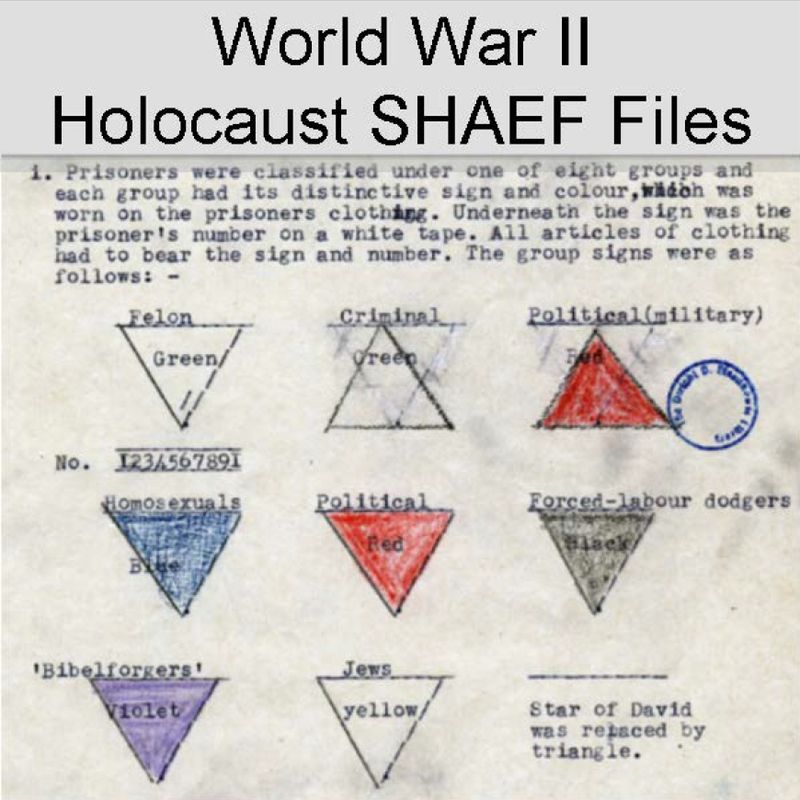
World War II: Holocaust Supreme Headquarters Allied Expeditionary Force (SHAEF) Files
$19.50
Description
SHAEF Files: Allied Encounters with the Holocaust
This timeline is based on the dates mentioned in the description of the SHAEF files and highlights key events related to the Allied forces encountering the Holocaust.
- July 1942: A report is compiled covering the treatment of Jews in Poland. This report includes descriptions of various German-run concentration camps located within Poland. This indicates early Allied intelligence gathering on the Nazi persecution of Jews and the existence of concentration camps.
- Late 1943: Supreme Headquarters Allied Expeditionary Force (SHAEF) is established as the headquarters of the Commander of Allied forces in northwest Europe. General Dwight D. Eisenhower is placed in command. This marks the formal establishment of the command structure that would eventually encounter the Holocaust sites.
- (Date not specified, within the 1942-1955 timeframe):A report is created detailing life within the German extermination camp KZ Natzweiler. This suggests Allied intelligence efforts were focused on understanding the conditions and nature of these camps.
- A report documents atrocities committed by the Germans against the civilian population of Belgium. While not directly focused on the Holocaust, it highlights the broader context of German war crimes and mistreatment of civilians in occupied territories.
- A report on an inspection of the German concentration camp for political prisoners located at Buchenwald is compiled. This indicates direct Allied observation and documentation of the conditions within concentration camps.
- A report is created concerning the Hasag Panzerfaust Factory and its associated concentration camp. This links forced labor in concentration camps to the German war industry.
- A report on Dachau is prepared by the Office of Strategic Services Section, Seventh Army. This signifies another instance of Allied investigation and reporting on a major concentration camp.
- (Date not specified, likely April 1945 based on historical context): General Dwight D. Eisenhower visits the German internment camp Ohrdruf near Gotha. This signifies a high-level Allied commander directly witnessing the horrors of the concentration camps shortly after their liberation.
- (Date not specified, likely April 1945 based on historical context): Cables are exchanged between Winston Churchill and General Eisenhower regarding inspection teams being sent to Ohrdruf Camp. This demonstrates the concern and attention given by top Allied leaders to the discoveries being made at the camps.
- 1942 – 1955: This range represents the overall timeframe of the documents contained within the SHAEF files, indicating ongoing Allied intelligence gathering, reporting, and analysis related to the Holocaust and its aftermath.
- End of World War II (1945): SHAEF ceases to exist as its operational mandate concludes with the Allied victory. However, the collected files continue to serve as historical documentation.
Cast of Characters
This is a list of the principal people mentioned in the description of the SHAEF files.
- Dwight D. Eisenhower: A General in the United States Army. He was the Commander of the Supreme Headquarters Allied Expeditionary Force (SHAEF) from its inception in late 1943 until the end of World War II. He later became the 34th President of the United States. His visit to Ohrdruf highlights the impact of witnessing the Holocaust firsthand on Allied leadership.
- George C. Marshall: A General of the Army and U.S. Army Chief of Staff during World War II. He was a key figure in the Allied war effort. General Eisenhower wrote to him concerning his visit to the Ohrdruf internment camp, indicating the importance of these findings being communicated to the highest levels of the US military command.
- Winston Churchill: The Prime Minister of the United Kingdom during World War II. He played a crucial role in leading the British war effort and coordinating with the Allied powers. The cables exchanged between him and General Eisenhower regarding the inspection of Ohrdruf demonstrate the British government’s awareness and concern about the conditions in the liberated camps.
World War II: Holocaust Supreme Headquarters Allied Expeditionary Force (SHAEF) Files
505 pages of documents covering allied forces directly encountering the structures, organization, and systems of mass murder employed during the Holocaust and its degree.
SHAEF (Supreme Headquarters Allied Expeditionary Force) was the headquarters of the Commander of Allied forces in north west Europe, from late 1943 until the end of World War II. Future United States President, General Dwight D. Eisenhower, was in command of SHAEF throughout its existence.
Files date from 1942 to 1955, and are made up of reports and correspondences., Documents include:
A July 1942 report that covers the treatment of Jews in Poland and includes descriptions of various German run concentration camps in Poland.
A report on life in the German extermination camp Kz Natzweiler.
A report on atrocities committed by the Germans against the civilian population of Belgium.
A letter written by General Eisenhower to General Marshall concerning his visit to the German internment camp Ohrdruf near Gotha.
Report on an inspection of German concentration camp for political prisoners located at Buchenwald.
Report on the Hasag Panzerfaust Factory and Concentration Camp.
Cables between Winston Churchill and General Eisenhower regarding inspection teams being sent to Ohrdruf Camp.
A report on Dachau prepared by the Office of Strategic Services Section, Seventh Army.








Related products
-
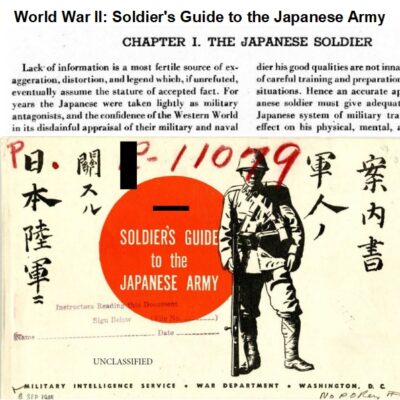

World War II: A Soldier’s Handbook on the Japanese Army
$3.94 Add to Cart -
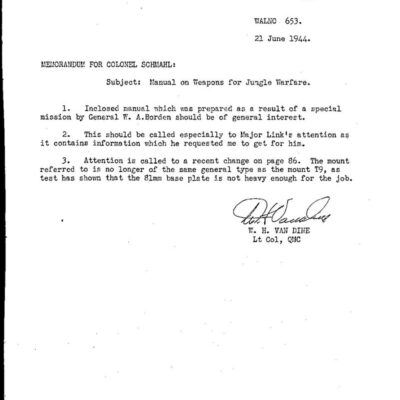
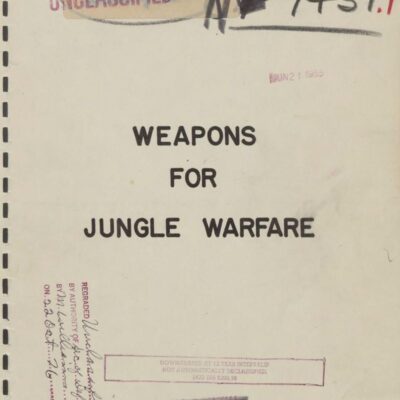
World War II Manual on Weapons for Jungle Warfare (1944)
$1.99 Add to Cart -
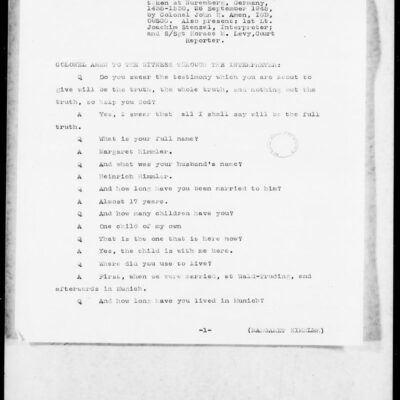
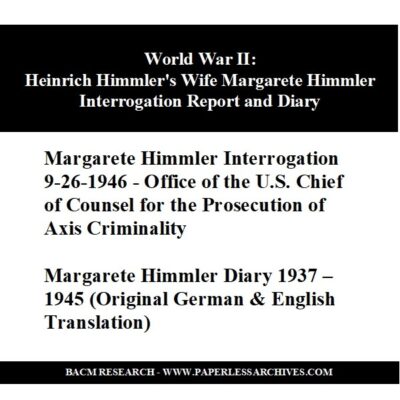
World War II: Interrogation Report and Diary of Margarete Himmler, Wife of Heinrich Himmler
$3.94 Add to Cart -
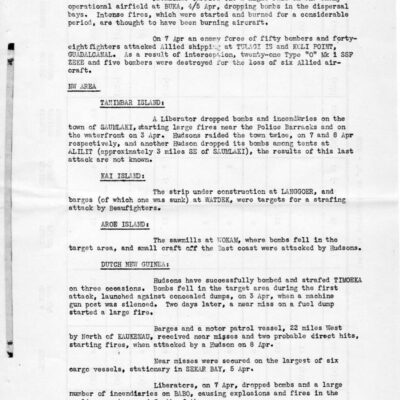
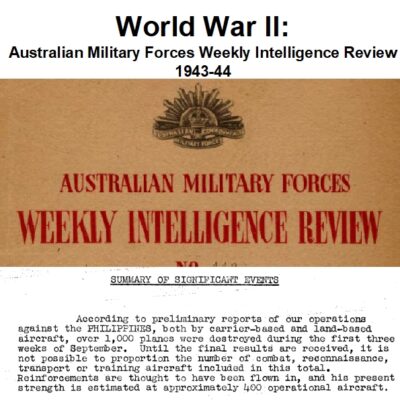
World War II: Australian Military Weekly Intelligence Reports 1943-44
$3.94 Add to Cart